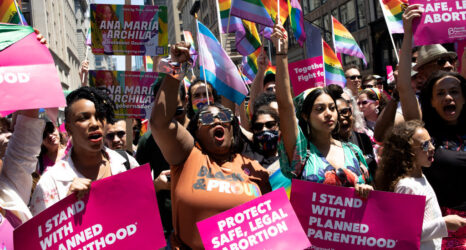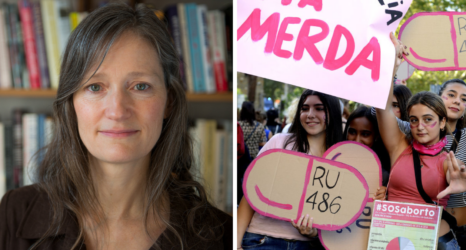The Trump Administration this week discretely cut over $200 million in funding for over 80 institutions around the country that have been working to find scientific data to help lower teen pregnancy rates.
The institutions—including various Planned Parenthoods, the University of Southern California, John Hopkin’s University and the Chicago Department of Public Health—had been appointed five-year grants by the Obama administration to find ways to reduce teen pregnancy rates in the U.S. and raise awareness about safe sex. The federal grants, which were awarded in 2015, will now be cut short by two years and expire on June 30, 2018 as per a decision by the Trump administration—and the scientists and those in charge of the statistical research were given almost no warning about the suspension of their projects. The institutions were told by letter that the cuts reflected a shift in priorities, and that funding their work was no longer in the federal government’s best interest.
“We are just reeling,” Jennifer Hettema, a University of New Mexico’s Health Science Center research assistant, told Reveal. “We’re not sure how we’ll adapt.” Many of these institutions now lack the resources to complete their research, meaning they’ve collected data which may now be rendered unusable. “It’s kind of like building half a skyscraper and then saying, ‘Never mind,'” explained Hettema, whose institution was working to help doctors find ways to discuss safe sex and pregnancy with Native American and Latino teens.
This decision to cut over $213 million for these institutions originated from the U.S. Department of Health and Human Services, and can most likely be traced back to Valerie Huber, an outspoken abstinence-only advocate who now serves as head of the Office of Adolescent Health. Huber was once CEO of the organization Ascend, once referred to as the National Abstinence Education Association, in which she was a strong proponent of abstinence only teaching methods in secondary education. Pat Paluzzi, a member of the Healthy Teen Network in Baltimore, says she believes the axing of the federal funding is “part and parcel of the shift to abstinence-only dollars.”
Although teen pregnancy rates in the U.S. have declined within the past decade, they remain higher than those in every other developed country. 1 in 4 teenage girls across the country will get pregnant before they reach age 20, and the rates are even higher for girls of low-income backgrounds and girls of color—especially those living in areas where public schools are underfunded. Whereas contraception and access to affordable reproductive healthcare and education has played a huge part in lowering the numbers or teenage pregnancies, abstinence-only sex education programs have repeatedly failed to do the same.
The cuts also reflect a broader Trump administration agenda: a war on women’s health, and especially women’s reproductive health and rights. Within days of his inauguration, Donald Trump reinstated and expanded the deadly Global Gag Rule, putting critical reproductive and sexual health care out of reach for millions of women around the world. The administration then slashed funding for the UN’s family planning program, UNFPA, furthering the damage. One of Trump’s core campaign promises—to repeal and replace the Affordable Care Act—has also put abortion care, Planned Parenthood funding and contraceptive coverage at risk for women in the U.S., and his administration’s budget is similarly disastrous for women and the poor.
“They don’t like to deal with the sexual reproductive health of teens,” Paluzzi said about the DHHS under Trump. “They frame it in this country as moral issues. Public health issues shouldn’t be political issues.”





